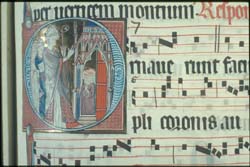 |
 |
 |
 |
 |
 |
 |
|
The nunneries (continued) (2/19) Recent historical research has highlighted the difficulties there are in establishing which nunneries were Cistercian, and what precisely this meant. It is not, as was once thought, simply a case of defining communities as Benedictine, Augustinian, Cistercian or Gilbertine. It is rather more complex. Contemporaries were frequently confused as to what constituted a Cistercian nunnery, especially in England where Gilbertine and Cistercian communities were sometimes muddled.(1) The Gilbertine priory of Halverholme, for example, was endowed at its foundation by Bishop Alexander of Lincoln who gave land ‘to the nuns following the life of the monks of Cîteaux as far as the strength of their sex allowed.’ (2) Whereas Bishop Gravesend of Lincoln pronounced that several nunneries in his diocese were Cistercian on account of their poverty, their adoption of the white habit and observance of Cistercian customs, Abbot John of Cîteaux (1265-84) stated that these female communities were not, in fact, members of the Cistercian Order.(3) To confuse matters yet further, the organisation of these Cistercian nunneries was generally not straightforward. It often combined customs and practices of different orders resulting in what has recently been described as a ‘cross-fertilisation of influences’. The Yorkshire priory of Swine, for example, was ‘possibly Gilbertine-influenced yet not Gilbertine …. calling itself Cistercian yet not officially recognised as such.’ (4) Clearly, we cannot simply describe nunneries as Cistercian or non-Cistercian. There were various ways in which a community might claim Cistercian identity and various degrees of its acceptance by the General Chapter; indeed some communities that were not formally acknowledged by the General Chapter were nonetheless fairly well accepted by the Order. Analysis of the Cistercian nunneries is therefore a complex and rather murky area, which should be broached with care and an awareness of the wider implications of the term ‘Cistercian.’ The following list of Cistercian nunneries in England, Ireland, Scotland and Wales, is a guideline to those communities that either thought of themselves or were described at some time in their history as Cistercian, whether this meant that they were fully acknowledged by the General Chapter of Cîteaux or whether they simply followed the Cistercian customs, wore the Cistercian habit, or claimed Cistercian privileges. |
||
|
